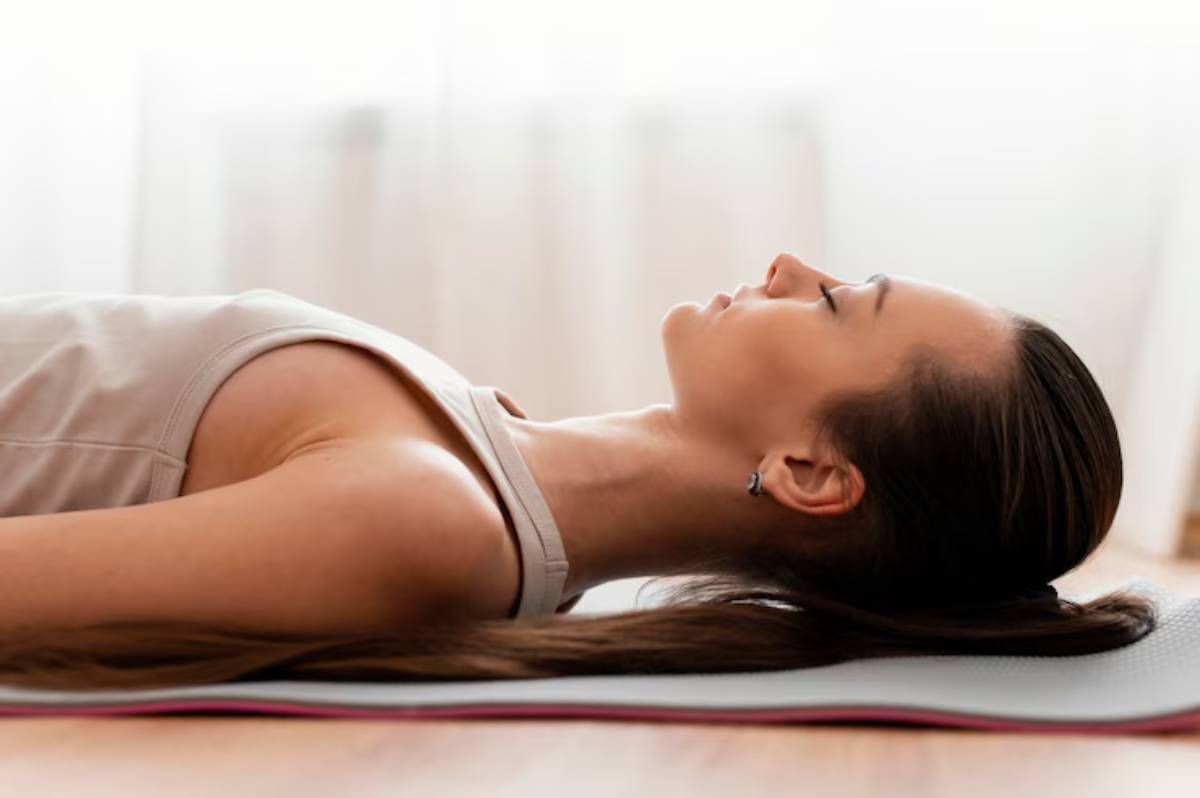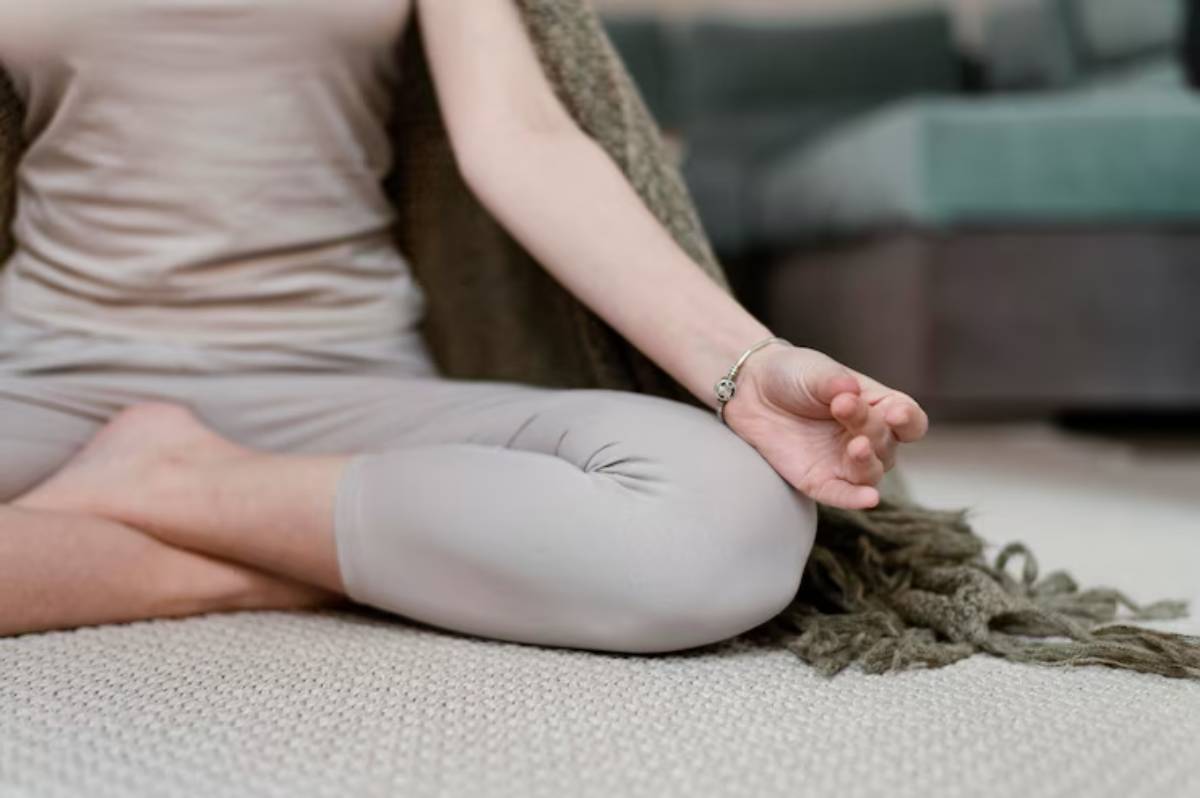The Health Blog

Visualisation Techniques to Ease Into Sleep
It’s late. The lights are out. The bed is warm. But sleep just won’t come.
Not because the body isn’t tired — it is. But the mind? Wide awake. Thoughts tumble over one another, replaying moments from the day or jumping ahead to tomorrow. It feels impossible to find the off switch.
This is where visualisation comes in.
Sleep visualisation methods help guide the mind to rest. They do this not by fighting thoughts, but by gently redirecting them.
What Is Visualisation for Sleep?
Visualisation, also known as guided imagery for sleep, helps you create calming mental images. This practice brings a sense of safety and relaxation. It taps into the brain’s natural ability to imagine — and uses that ability to invite stillness.
Rather than trying to stop thinking (which rarely works), visualisation gives the mind something soothing to focus on. A beach at sunset. A forest path. A quiet cabin with a crackling fire. The goal isn’t to escape reality — it’s to create a peaceful space in the mind where sleep feels more possible.
Why It Works: The Mind-Body Connection

The brain can’t always tell the difference between something imagined and something experienced. That’s why visualising a calm setting can trigger the same physiological responses as actually being there.
Here’s how it helps:
- Lowers heart rate and blood pressure
- Reduces cortisol (the stress hormone)
- Engages the parasympathetic nervous system (rest and digest mode)
- Distracts from intrusive thoughts
- Prepares the brain for deeper sleep stages
Among natural sleep strategies, visualisation is easy to use and very effective. This is especially true for overthinkers and light sleepers.
Key Principles for Effective Sleep Visualisation
Before exploring techniques, it’s good to know what makes sleep visualization effective:
1. Imagery Should Be Personal and Calming
The best visuals are ones that evoke a genuine sense of peace. That could be nature, a childhood memory, or a completely imagined setting.
2. Use the Senses
Try to mentally engage all five senses — What does the scene look like? What sounds are present? Is there a scent? A feeling in the air?
3. No Pressure to Fall Asleep
Visualisation is about creating space for rest, not forcing sleep to happen. Paradoxically, releasing the pressure to sleep often makes it easier to drift off.
Five Guided Imagery Techniques to Try

Here are five natural sleep strategies using visualisation. Try them one at a time to see what feels most soothing.
1. The Safe Place Visualisation
This classic method involves imagining a space where everything feels calm and safe. It could be real or imaginary.
How to practise it:
- Lie down in bed with eyes closed
- Breathe slowly and deeply for a few minutes
- Picture a place where comfort comes naturally — a cosy cabin, a quiet meadow, a warm blanket fort
- Mentally explore the space using all five senses
- Stay with the scene gently until sleep begins or the body fully relaxes
Why it works: This type of guided imagery for sleep creates emotional safety — an essential condition for restful sleep.
2. Nature Journey Visualisation
This method means imagining a calm place in nature. Think of a forest path, a lakeside trail, or a field of tall grass.
How to practise it:
- Start with slow breathing and a quiet environment
- Picture the beginning of a walk — soft ground beneath the feet, a gentle breeze, leaves rustling
- Imagine moving slowly, observing small details: colours, sounds, textures
- Keep the pace slow and calming. There’s nowhere to go. Just be present.
- Let the scene fade naturally as the mind begins to drift
Why it works: Natural environments lower stress levels. Even imagined exposure to nature can trigger calming physiological responses.
3. Cloud Floating Visualisation
This dreamy exercise uses the sensation of weightlessness to lull the body into stillness.
How to practise it:
- Picture lying on a soft, pillowy cloud — warm, gentle, completely supportive
- Imagine floating slowly through a sky painted with sunset colours
- Feel the cloud rise and fall slightly with the breeze, carrying away any tension or thoughts
- Let the body feel heavier as the cloud feels lighter
- Allow the mind to float off, too — no direction, no effort
Why it works: The sense of floating helps release physical tension and mimics the natural drift into sleep.
4. Counting Down Into Sleep
This combines gentle counting with visual cues — often imagined as a descent or fade into deeper stillness.
How to practise it:
- Close the eyes and breathe slowly
- Begin imagining descending a staircase, path, or elevator — slowly, safely
- Count down from 20 or 50, imagining each step as taking you deeper into rest
- With each count, feel the body sink further into the bed
- If thoughts interrupt, gently return to the count
Why it works: Counting focuses the mind, while the imagined descent creates a symbolic path into sleep.
5. Light Imagery Visualisation
This method uses calming light that moves through the body. It’s a common practice in meditation and energy work.
How to practise it:
- Picture a soft light — white, golden, or any soothing colour
- Imagine it entering the body with each breath, gently filling each part
- Start at the toes and move up to the head, letting the light “soften” each area
- Picture tension dissolving wherever the light touches
- Let the light dim slowly, fading like the end of a candle
Why it works: This method combines mental imagery and gentle body awareness. It’s great for anyone who likes meditative practices.
When and How to Practise
The best time to use visualisation is just before bed, once screens are off and the lights are dimmed. Pair it with a bedtime routine. Try herbal tea, stretching, or breathing exercises. This can boost its effects.
For night-time wake-ups, visualisation can also help resettle the mind. Rather than checking the clock or reaching for a phone, return to a calm image.
How Long Should It Take?

There’s no set length. Some people find sleep comes within minutes. Others stay with the imagery for 15–30 minutes.
The goal isn’t speed — it’s surrender. The act of focusing gently on something peaceful, without pressure or urgency, is the win.
Helpful Tips to Support the Practice
- Use guided recordings. Many apps and websites offer free audio versions of these techniques.
- Keep the space calm. Dim lighting, soft bedding, and reduced noise all support a sleep visualisation method.
- Don’t chase sleep. Let go of trying. Focus on the scene, not the outcome.
- Be patient. Like any skill, it improves with repetition.
For Children and Teens Too
Visualisation is great for young people. It helps those who resist bedtime or feel anxious. Imagery like flying on a dragon, floating on a lily pad, or walking in a fairytale forest can soothe fears and calm busy minds.
Families can create a connection and calm by sharing a visualisation at bedtime.
Sleep as a Story, Not a Struggle
Falling asleep doesn’t always need to be fought for. Sometimes, it just needs a softer approach — a story that leads gently into silence. A safe space inside the mind where the world quiets down, and rest becomes a natural next step.
Guided imagery for sleep isn’t about escaping. It’s about arriving — slowly, patiently, and kindly — into rest.









